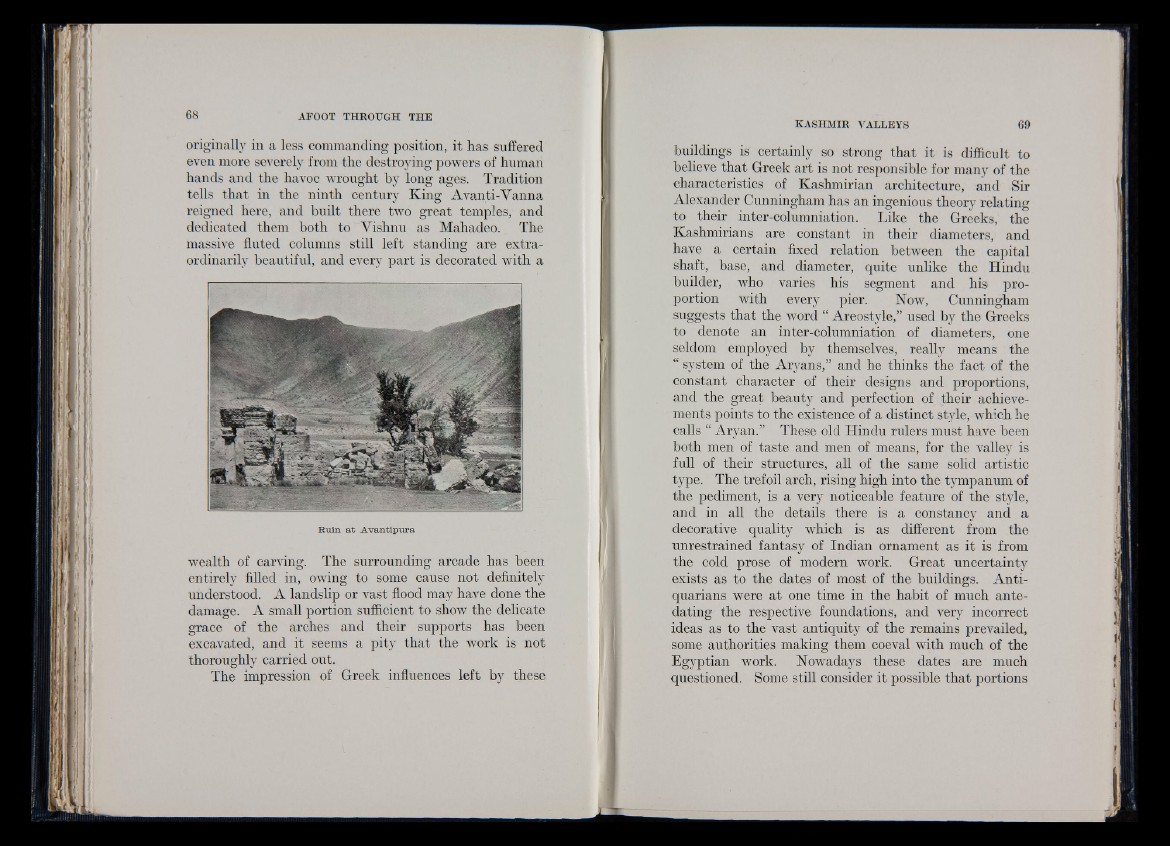
originally in a less commanding position, it has suffered
even more severely from the destroying powers of human
hands and the havoc wrought by long ages. Tradition
tells that in the ninth century King Avanti-Vanna
reigned here, and built there two great temples, and
dedicated them both to Vishnu as Mahadeo. The
massive fluted columns still left standing are extraordinarily
beautiful, and every part is decorated with a
Ruin a t A vantipura
wealth of carving. The surrounding arcade has been
entirely filled in, owing to some cause not definitely
understood. A landslip or vast flood may have done the
damage. A small portion sufficient to show the delicate
grace of the arches and their supports has been
excavated, and it seems a pity that the work is not
thoroughly carried out.
The impression of Greek influences left by these
buildings is certainly so strong that it is difficult to
believe that Greek art is not responsible for many of the
characteristics of Kashmirian architecture, and Sir
Alexander Cunningham has an ingenious theory relating
to their inter-columniation. Like the Greeks, the
Kashmirians are constant in their diameters, and
have a certain fixed relation between the capital
shaft, base, and diameter, quite unlike the Hindu
builder, who varies his segment and his proportion
with every pier. Now, Cunningham
suggests that the word “ Areostyle,” used by the Greeks
to denote an inter-columniation of diameters, one
seldom employed by themselves, really means the
“ system of the Aryans,” and he thinks the fact of the
constant character of their designs and proportions,
and the great beauty and perfection of their achievements
points to the existence of a distinct style, which he
calls “ Aryan.” These old Hindu rulers must have been
both men of taste and men of means, for the valley is
full of their structures, all of the same solid artistic
type. The trefoil arch, rising high into the tympanum of
the pediment, is a very noticeable feature of the style,
and in all the details there is a constancy and a
decorative quality which is as different from the
unrestrained fantasy of Indian ornament as it is from
the cold prose of modem work. Great uncertainty
exists as to the dates of most of the buildings. Antiquarians
were at one time in the habit of much antedating
the respective foundations, and very incorrect
ideas as to the vast antiquity of the remains prevailed,
some authorities making them coeval with much of the
Egyptian work. Nowadays these dates are much
questioned. Some still consider it possible that portions